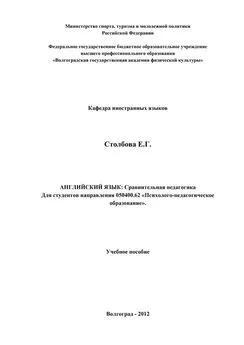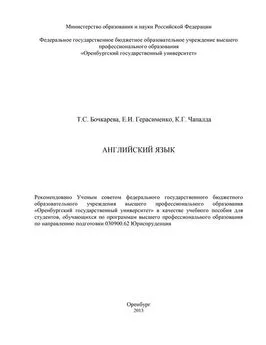Елена Беликова - Английский язык
- Название:Английский язык
- Автор:
- Жанр:
- Издательство:неизвестно
- Год:неизвестен
- ISBN:нет данных
- Рейтинг:
- Избранное:Добавить в избранное
-
Отзывы:
-
Ваша оценка:
Елена Беликова - Английский язык краткое содержание
Студенту без шпаргалки никуда! Удобное и красивое оформление, ответы на все экзаменационные вопросы ведущих вузов России.
Английский язык - читать онлайн бесплатно ознакомительный отрывок
Интервал:
Закладка:
Subcostalis portion: Fibers extend from the inner surface of the angle of one rib to the rib that is inferior to it.
Internal thoracic vessels, branches of the subclavian arteries, run anterior to these fibers. Intercostal structures
Intercostal nerves: there are 12 pairs of thoracic nerves, 11 intercostal pairs, and 1 subcostal pair.
Intercostal nerves are the ventral primary rami of thoracic spinal nerves. These nerves supply the skin and musculature of the thoracic and abdominal walls.
Intercostal arteries: there are 12 pairs of posterior and anterior arteries, 11 intercostal pairs, and 1 subcostal pair.
Anterior intercostal arteries.
Pairs 1–6 are derived from the internal thoracic arteries.
Pairs 7–9 are derived from the musculophrenic arteries.
Posterior intercostal arteries: the first two pairs arise from the superior intercostal artery, a branch of the costo-cervical trunk of the subcla vian artery.
Nine pairs of intercostal and one pair of subcostal arter ies arise from the thoracic aorta.
Intercostal veins: Anterior branches of the intercostal veins drain to the internal thoracic and musculophrenic veins.
Posterior branches drain to the azygos system of veins.
Lymphatic drainage of intercostal spaces: anterior drainage is to the internal thoracic (parasternal) nodes.
Posterior drainage is to the paraaortic nodes of the poste rior mediastinum.
thoracic – грудной
wall – стенка
clavicle – ключица
xiphisternal – грудинный
groove – углубление
intercostal – межреберный
subcostal – подкостный
transversus – поперечный
musculophrenic – мышечный грудобрюшной
paraaortic – парааортальный
mediastinum – средостение
18. Blood. Formed elements of the blood. Erythrocytes and platelets
Blood is considered a modified type of connective tissue Mesodermal is composed of cells and cell frag ments (erythrocytes, leukocytes, platelets), fibrous proteins (fibrinogen), and an extracellular fluid and proteins (plasma). It also contains cellular elements of the immune system as well as humoral factors
The formed elements of the blood include erythrocytes, leukocytes, and platelets.
Erythrocytes, or red blood cells, are important in trans porting oxygen from the lungs to tissues and in returning carbon dioxide to the lungs. Oxygen and carbon dioxide carried in the RBC combine with hemoglobin to form oxyhemoglobin and carbaminohemoglobin, respectively.
Mature erythrocytes are denucleated, biconcave disks with a diameter of 7–8 mm. The biconcave shape results in a 20–30 % increase in sur face area compared to a sphere.
Erythrocytes have a very large surface area: volume ratio that allows for efficient gas transfer. Erythrocyte membranes are remarkably pliable, enabling the cells to squeeze through the narrowest capillaries In sickle cell anemia, this plasticity is lost, and the subsequent clogging of capillaries leads to sickle crisis. The normal concentration of erythrocytes in blood is 3,5–5,5 million/mm 3 in women and 4,3–5,9 million/mm 3in men. The packed volume of blood cells per total volume of known as the hematocrit. Normal hematocrit values are 46 % for women and 41–53 % for men.
When aging RBCs develop subtle changes, macrophages in the bone marrow, spleen, and liver engulf and digest them. The iron is carried by transferring in the blood to certain tissues, where it combines with apoferritin to form ferritin. The heme is catabolized into biliver-din, which is converted to bilirubin. The latter is secreted with bile salts.
Platelets (thromboplastids) are 2–3 mm in diameter.
They are a nuclear, membrane-bound cellular fragments derived by cytoplasmic fragmentation of giant cells, called megakaryocytes, in the bone marrow.
They have a short life span of approximately 10 days.
There are normally 150 000–400 000 platelets per mm3 of blood. Ultrastructurally, platelets contain two portions: a peripheral, light-staining hyalomere that sends out fine cytoplasmic processes, and a central, dark-staining granulomere that con tains mitochondria, vacuoles, glycogen granules, and granules. Platelets seal minute breaks in blood vessels and maintain endothelial integrity by adhering to the damaged vessel in a process known as platelet aggregation. Platelets are able to form a plug at the rupture site of a vessel because their mem brane permits them to agglutinate and adhere to surfaces.
Platelets aggregate to set up the cascade of enzymatic reac tions that convert fibrinogen into the fibrin fibers that make up the clot.
mesodermal – мезодермальный
erythrocytes – эритроциты
platelets – тромбоциты
carbon – углерод
dioxid – диоксид
span – промежуток
light-staining – легкое окрашивание
to aggregate – соединяться
19. Blood. Formed elements of the blood. Leukocytes
Leukocytes, or white blood cells, are primarily with the cellular and humoral defense of the organism foreign materials. Leukocytes are classified as granulocytes (neutrophils, eosinophils, basophils) and agranulocytes (lympmonocytes).
Granulocytes are named according to the staining properties of their specific granules. Neutrophils sare 10–16 mm in diameter.
They have 3–5 nuclear lobes and contain azurophilic granules (lysosomes), which contain hydrolytic enzymes for bacterial destruction, in their cytoplasm. Neutrophils are phagocytes that are drawn (chemotaxis) to bacterial chemoattractants. They are the primary cells involved in the acute inflammatory response and represent 54–62 % of leukocytes.
Eosinophils: they have a bilobed nucleus and possess acid granulations in their cytoplasm. These granules contain hydrolytic enzymes and peroxidase, which a discharged into phagocytic vacuoles.
Eosinophils are more numerous in the blood during allergic diseases; they norma asent only – 3 % of leukocytes.
Basophils: they possess large spheroid granules, which are basophilic and metachromatic
Basophils degranulate in certain immune reaction, releasing heparin and histamine into their surroundings They also release additional vasoactive amines and slow reacting substance of anaphylaxis (SRS-A) consisting of leu-kotrienes LTC4, LTD4, and LTE4. They represent less than 1 % – of leukocytes
Agranulocytes are named according to their lack of specific granules. Lymphocytes are generally small cells measuring 7 – 10 mm in diameter and constitute 25–33 % of , leukocytes. They con tain circular dark-stained nuclei and scanty clear blue cyto plasm. Circulating lymphocytes enter the blood from the lymphatic tissues. Two principal types of immunocompetent lymphocytes can be identified T lymphocytes and В lymphocytes.
T cells differentiate in the thymus and then circulate in the peripheral blood, where they are the principal effec tors of cell-mediated immunity. They also function as helper and suppressor cells, by modulating the immune response through their effect on В cells, plasma cells, macrophages, and other T Cells.
В cells differentiate in bone marrow. Once activated by contact with an antigen, they differentiate into plasma cells, which synthesize antibodies that are secreted into the blood, intercellular fluid, and lymph. В lymphocytes also give rise to memory cells, which differentiate into plas ma cells only after the second exposure to the antigen. Monocytes vary in diameter from 15–18 mm and are the largest of the peripheral blood cells. They constitute 3–7 % of leukocytes.
Monocytes possess an eccentric nucleus. The cytoplasm has a ground-glass appearance and fine azurophilic granules.
Monocytes are the precursors for members of the mo-nonuclear phagocyte system, including tissue macrophages (histiocytes), osteoclasts, alveolar macrophages, and Kupffer cells of the liver.
mesodermal – мезодермальный
erythrocytes – эритроциты
leukocytes – лейкоциты
fibrous proteins – волокнистые белки
immune – иммунный
humoral – гуморальный
to contain – содержать
nuclei – ядра
20. Plasma
Plasma is the extracellular component of blood. It is an aqueous solution containing proteins, inorganic salts, and organic com pounds Albumin is the major plasma protein that maintains the osmotic pressure of blood. Other plasma proteins include the globulins (alpha, beta, gamma) and fibrinogen, which is necessary for the formation of fibrin in the final step of blood coagulation Plasma is in equilibrium with tissue interstitial fluid through capil lary walls; therefore, the composition of plasma may be used to judge the mean composition of the extracellular fluids Large blood proteins remain in the intravascular compartment and do not equilibrate with the interstitial fluid Serum is a clear yellow fluid that is separated from the coagulum during the process of blood clot formation. It has the same com position as plasma, but lacks the clotting factors (especially fib rinogen).
Lymphatic vessels
Lymphatic vessels consist of a, fine network of thin-walled vessels that drain into progressively larger and progressively thicker-walled collecting trunks. These ultimately drain, via the thoracic duct and right lymphatic duct, into the left and right subclavian veins at their angles of junction with the internal jugular veins, respectively. The lymphatics serve as a one-way (i. e., toward the heart) drainage sys tem for the return of tissue fluid and other diffusible substances, including plasma proteins, which constantly escape from the blood through capillaries. They are also important in serving as a conduit for channeling lymphocytes and antibodies produced in lymph nodes into the blood circulation.
Lymphatic capillaries consist of vessels lined with endothelial cells, which begin as blind-ended tubules or saccules in most tis sues of the body Endothelium is attenuated and usually lacks a continuous basal lamina. . Lymphatic vessels of large diameter resemble veins in their struc ture but lack a clear-cut separation between layers. Valves are more numerous in lymphatic vessels. Smooth muscle cells in the media layer engage in rhythmic contraction, pumping lymph toward the venous system. Smooth muscle is well-developed in large lymphatic ducts.
Circulation of lymph is slower than that of blood, but it is nonetheless an essential process. It has been estimated that in a single day, 50 % or more of the total circulating protein leaves the blood circulation at the capillary level and is recaptured by the lymphatics.
Distribution of lymphatics is ubiquitous with some notable excep tions, including epithelium, cartilage, bone, central nervous sys tem, and thymus.
plasma – плазма
extracellular – внеклеточный
aqueous – водный
solution – раствор
proteins – белки
inorganic – неорганический
salts – соли
organic – органический
albumin – альбумин
globulins – глобулины
alpha – альфа
beta – бета
gamma – гамма
fibrinogen – фибриноген
lymphatic – лимфатический
Читать дальшеИнтервал:
Закладка:










